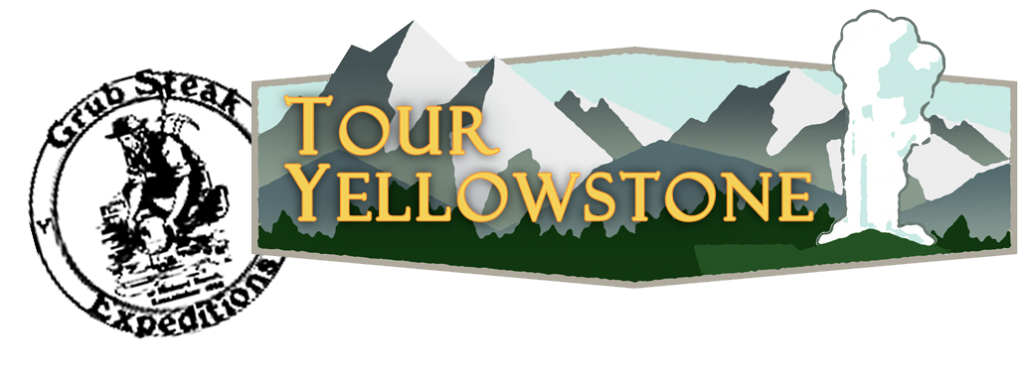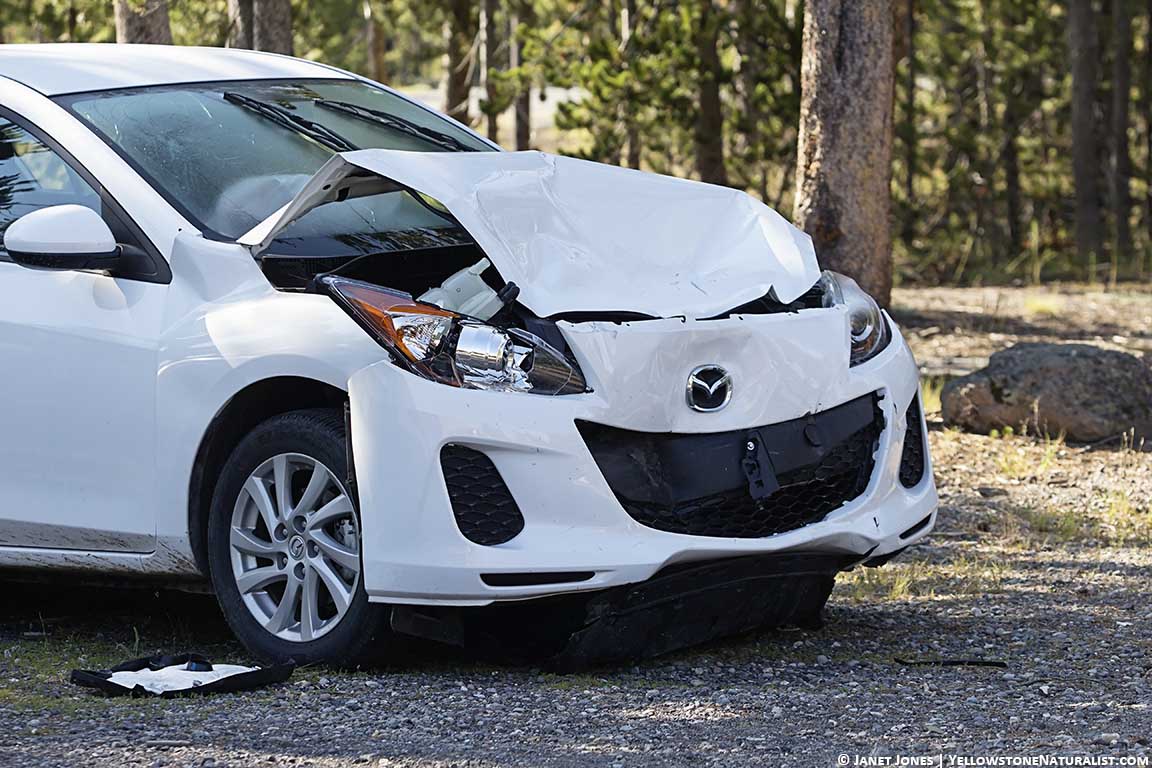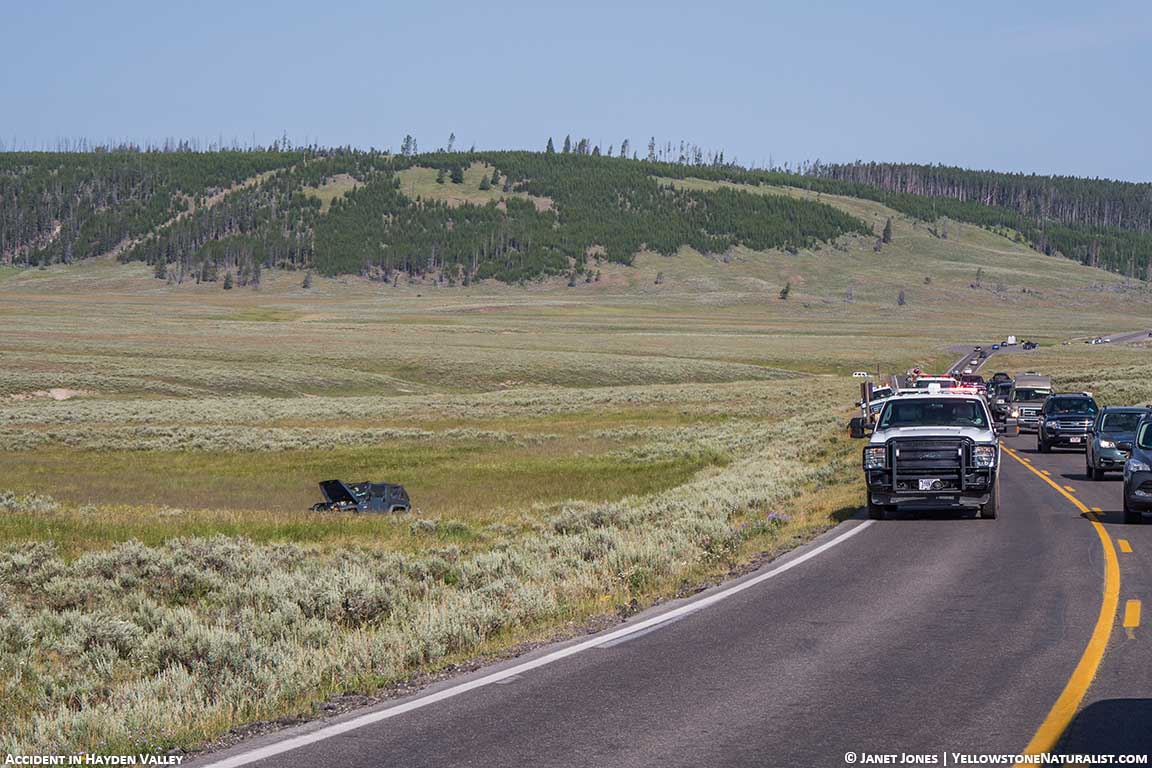Driving in Yellowstone
Having reasonable expectations set to drive in Yellowstone makes it much more enjoyable. In this post, I share the realities of driving in Yellowstone and how to set your expectations to make your trip better.
This post brought to you by our sponsor TOUR YELLOWSTONE based out of Cody, Wyoming.
 Private, custom-crafted tours.
Private, custom-crafted tours.
Based out of Cody, Wyoming.
We sanitize our SUVs for your safety.
We’re ready when you are!
307-527-6316
Tour Yellowstone offers custom-crafted private guided tours to Yellowstone as well as the Big Horn Basin east of Yellowstone. Explore with us in our comfortable SUVs with just your group and a guide. (Disclaimer: I do work for Tour Yellowstone)
As you look at a map, it seems as though it would be reasonably easy to drive through Yellowstone relatively quickly. But what the map doesn’t show is the traffic. Yellowstone is a destination park. Most visitors come to see the sites here: Old Faithful, the Grand Canyon of the Yellowstone, the Lamar Valley, not to mention wildlife and beautiful hot springs. A general rule of thumb is to give yourself about 30 minutes between major hubs in Yellowstone – 40 minutes when very crowded that allows time to find a parking space.
Problems driving in Yellowstone
- Speed limits. in Yellowstone speed limits are mostly 45 mph, but during busy times, it’s rare to drive 45 mph; the reality is usually closer to 35 or even 30 mph.
- Wildlife on the roads. One very valid reason for the lower speeds in the park is that there’s the potential for wildlife on the road around every corner. Literally. Hitting wildlife – in particular bison or moose – both very large animals – makes for a horrid trip memory. The other aspect of wildlife often being close to the roads is that people drive slowly to look for wildlife. That can slow down a line of traffic considerably, or you can come upon a car stopped in the middle of the road on a blind curve.
- Impatience doesn’t pay. Trying to pass someone when it’s crowded doesn’t always turn out as planned when an accident occurs. Again – not a memory you want to make.
- Shoulders are almost non-existent in places. If you’re not used to driving mountain passes with steep drop-offs and no shoulders to speak of, you (or the motorhome in front of you) will likely need to take it very slowly.
- Bison on the road. While it’s a delight to see bison in Yellowstone, it’s not so delightful when you’re in a line following along at bison pace – with each vehicle wanting a pause for their photo opportunity.
- Parking lots can fill during the peak days of summer – some are worse than others. Don’t always expect to find a parking space immediately.
- Between destinations can become a tunnel of trees. This was my chief complaint when I was young. I am a child of the West and adore the wide-open spaces. While the 1988 fires opened up the views to my delight, the trees have since nearly grown back enough to cut out the views again.
Given this litany of troubles with driving in the park, how do you make it an enjoyable experience?
Solutions for driving in Yellowstone
- Pack your patience. Just know going slow is a large part of driving in Yellowstone. Expect to take it easy. Expect to be in a line of cars.
- Adopt an attitude of ease. Change yourself to Yellowstone Time/Mountain Time/Island Time. You’ll get there when you get there – and it’ll all work out somehow. Keep it easy and flexible. Expect serendipity when you get stuck behind that 40 ft. RV towing a trailer. Know that this slowing might allow you to catch some wildlife viewing opportunity that wouldn’t have happened if you had been able to zip along. This attitude of ease will make a world of difference.
- Get moving early. Most people on vacation want to sleep in and relish slow mornings. That’s one of the joys of vacations. If you can start your day earlier, you’ll miss the 9 AM rush on the roads.
- Eat at a different time than most of the world. Eat sooner or later than the norm, or bring a lunch and snacks with you.
- Use pullouts. If you want to drive slower to watch for wildlife or savor the scenery, pull over using a pullout or pull off the road, so all tires are behind the white line. This lets others continue on their way and makes everyone’s day a bit better. I find sometimes it’s a great advantage as a photographer to be at the end of the line.
- Give yourself more time than you expect. This is a general rule of thumb for most any vacation, but especially one with as many things on the “to see” list as exists here.
- Hire a tour guide. Even if you plan to spend a week in the park, hiring a tour guide for even a day or two will let you experience the pace that works in the park. You’ll also probably pick up a lot of tips on where to park and learn what areas you might want to revisit to give yourself more time to explore.
Be Outside • Take Notes
AFFILIATE LINKS
This site contains affiliate links. If you click on a link and make a purchase, I receive a small portion of that sale at no extra cost to you. Your purchases help to keep this site in development.
SHOP ON AMAZON
GET MORE NEWS AND ANNOUNCEMENTS
Sign up for the Yellowstone Naturalist Newsletter
VISIT OUR SPONSORS
 Private, custom-crafted tours.
Private, custom-crafted tours.
Based out of Cody, Wyoming.
We sanitize our SUVs for your safety.
We’re ready when you are!
307-527-6316
 Private, custom-crafted tours.
Private, custom-crafted tours.Based out of Cody, Wyoming.
We sanitize our SUVs for your safety.
We’re ready when you are!
307-527-6316


